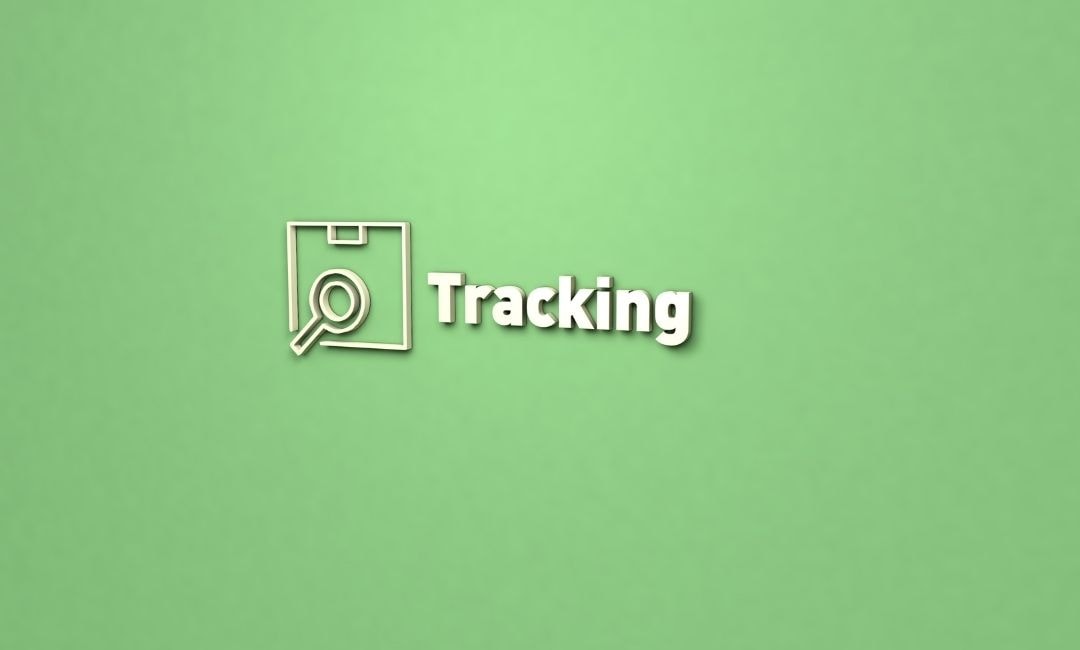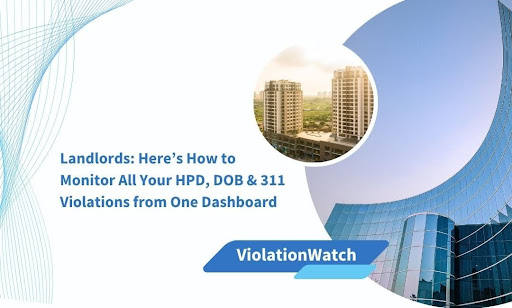Picture this: You’re managing multiple NYC properties when your phone buzzes. Another violation notice. You scramble through filing cabinets, browser tabs, and sticky notes, trying to piece together which building, what agency, and when the deadline hits.
Sound familiar?
Most NYC landlords waste 15-20 hours monthly juggling between HPD’s website, DOB NOW, and 311 complaints. That’s time you could spend finding new tenants, negotiating better deals, or actually fixing issues before they become violations.
The truth? You’re bleeding money through inefficient violation tracking. Late responses mean higher fines. Missed deadlines trigger additional penalties. And scattered information leads to duplicate work and overlooked compliance issues.
But what if you could see every violation across your entire portfolio in 30 seconds flat?
Here’s what we’ll cover:
- Why traditional violation tracking costs you thousands in hidden expenses
- The must-have features that separate professional dashboards from basic trackers
- Step-by-step setup to monitor HPD, DOB, and 311 violations in one view
We’ll show you exactly how to transform your violation chaos into a streamlined system that practically runs itself.
The Hidden Tax of Manual Violation Tracking
Every violation notice that lands on your desk starts a costly chain reaction. You’re not just dealing with the fine itself—you’re hemorrhaging money through inefficient processes that compound over time.
The Time Sink Nobody Talks About
Think about your current violation workflow. You log into HPD’s website to check housing violations. Switch tabs to DOB NOW for building permits and violations. Then dive into 311 to see what complaints tenants filed this week.
Each platform has different logins, interfaces, and update schedules. Plus, you need to verify your building identification number across systems and maintain a valid property registration statement for HPD compliance. You’re essentially running three separate tracking systems for one portfolio.
Where Your Money Actually Goes
Late discovery means higher penalties. When violations sit unnoticed across multiple platforms, you miss early resolution windows. What starts as a $250 fix balloons into a $2,500 problem because you caught it 30 days late.
Duplicate efforts drain resources. Your property manager checks HPD violations. Your assistant monitors 311 complaints. Your contractor reviews DOB notices. Three people are doing fragmented work that one system could handle.
Poor documentation triggers repeat violations. Without centralized records, you can’t prove previous compliance. HPD records often conflict with your documentation, making it harder to dispute violations or prove the correction of previous safety issues. Inspectors issue new violations for already-resolved issues, forcing you to fight the same battles repeatedly.
The Compliance Deadline Juggling Act
Manual tracking turns deadline management into a high-stakes guessing game. HPD gives you 21 days for certain violations. DOB has different timelines. ECB hearings require specific documentation windows.
Miss one deadline, and you’re looking at:
- Increased fines and penalties
- Additional inspection fees
- Legal representation costs
- Potential litigation from tenants
Administrative Overhead That Scales Badly
Own five buildings? That’s manageable with spreadsheets. Own 15? Now you need dedicated staff just to track violations. The administrative burden scales exponentially while eating into your profits.
Consider what you’re really paying for:
- Staff hours spent on manual data entry
- Physical storage for violation documents
- Time lost searching for specific notices
- Mistakes from human error in tracking
The Opportunity Cost of Reactive Management
Here’s what hurts most—while you’re drowning in violation management, you’re missing revenue opportunities. That time spent cross-referencing agencies and updating spreadsheets? You could be negotiating better vendor contracts, improving tenant retention, or expanding your portfolio.
Traditional tracking keeps you in reactive mode. You’re always playing catch-up instead of preventing violations before they happen. And that reactive stance costs more than any individual fine.
The solution isn’t working harder at a broken system. It’s recognizing that manual, multi-platform tracking is fundamentally incompatible with profitable property management in NYC’s complex regulatory environment.
What Separates Professional Violation Dashboards from Basic Tracking Tools

Not all violation tracking systems are built equal. The difference between a basic tracker and a professional dashboard can mean thousands saved in fines and dozens of hours reclaimed each month.
Let’s break down the features that actually matter for profitable property management.
Comprehensive Violation & Compliance Tracking
A professional dashboard doesn’t just list violations—it creates a complete compliance ecosystem. You need visibility across all NYC agencies in one unified view. That means HPD, DOB, ECB, FDNY, DEP, and every other acronym that keeps you up at night.
Basic trackers show you what happened. Professional systems show you what’s happening now and what’s coming next. They connect directly to New York City Department systems, tracking everything from housing preservation violations to local law compliance requirements across all your units. They consolidate:
- Active violations requiring immediate action
- Resolved issues with full documentation trails
- Pending inspections and hearings
- Historical patterns that predict future problems
AI-Powered Instant Scanning
Manual data entry is yesterday’s approach. Professional dashboards use intelligent scanning to automatically pull violation data from multiple city databases. No more logging into separate portals or copying violation numbers by hand.
This technology continuously monitors city systems and updates your dashboard in real-time. New violation posted at 3 AM? You’ll know about it before your morning coffee.
Built-In Fine Avoidance Systems
Here’s what makes professional dashboards worth their weight in gold—they’re designed to prevent costly fines, not just track them.
Smart features that save money:
- Automated deadline calculations for each violation type
- Color-coded priority systems based on fine amounts
- Escalation workflows for high-risk violations
- Pre-hearing document checklists
- Automated reminders for property taxes and community renewal deadlines
Real-Time Notifications That Actually Work
Getting an email about a violation isn’t enough. Professional systems deliver multi-channel alerts that match your workflow:
| Alert Type | Delivery Method | Timing |
| New Violations | SMS + Email + Dashboard | Instant |
| Upcoming Deadlines | Push Notifications | 7, 3, and 1 day before |
| Status Changes | In-app + Email | Within 1 hour |
| High-Priority Issues | Phone Call + All Channels | Immediate |
Multiple Location Monitoring at Scale
Managing one building is straightforward. Managing 20 across different neighborhoods? That’s where professional dashboards shine.
Portfolio-wide features include:
- Customizable property groupings
- Cross-portfolio violation analytics
- Bulk action capabilities
- Individual property deep-dives
- Borough-specific compliance tracking
Simple & Automated Workflows
Complexity kills compliance. Professional dashboards strip away unnecessary steps and automate repetitive tasks.
Your team gets:
- One-click violation acknowledgment
- Automated document generation
- Pre-filled response templates
- Integrated vendor assignment
- Progress tracking without manual updates
Fast & Easy Setup
Time to value matters. While basic systems require IT departments and lengthy implementations, professional dashboards get you running in minutes, not months.
What rapid deployment looks like:
- Import your portfolio via spreadsheet upload
- Automatic property verification
- Instant historical violation retrieval
- No software installation required
- Mobile-ready from day one
Transparent Pricing Without Surprises
Professional dashboards price based on value delivered, not hidden fees. You should know exactly what you’re paying for:
- Per-property or portfolio pricing
- No setup or training fees
- Unlimited user accounts
- All features included
- Clear ROI metrics
The Professional Dashboard Difference
Beyond these core features, truly professional systems offer:
- Advanced Analytics: Track violation trends, identify problem properties, and benchmark your portfolio against neighborhood averages. Turn compliance data into strategic insights.
- Document Management Integration: Store, organize, and retrieve all violation-related documents directly within the dashboard. No more hunting through file cabinets or email attachments.
- Compliance Team Support: Access to violation resolution experts who understand NYC’s complex regulatory landscape. Get guidance on challenging violations and hearing strategies.
- API Connectivity: Integrate with your existing property management software, accounting systems, and communication tools. Your violation dashboard should enhance your tech stack, not complicate it.
- Audit Trail Protection: Maintain defensible records of all actions taken, communications sent, and resolutions achieved. When disputes arise, you’re covered. This becomes essential when facing housing court proceedings or dealing with violation-related liens on your properties.
Every feature discussed above—from comprehensive multi-agency tracking to transparent pricing—comes standard with ViolationWatch. We’ve built our platform specifically for NYC property owners who refuse to let violations eat into their profits.
Your 4-Step Setup to Unified Violation Monitoring

Getting all your HPD, DOB, and 311 violations into one view takes less time than brewing your morning coffee. Here’s exactly how to transform your scattered violation tracking into a streamlined command center.
Step 1 – Sign Up and Add Your Properties
Start by creating your ViolationWatch account. The platform walks you through a simple registration process that takes under two minutes.
What you’ll need:
- Your email address and phone number
- Basic property information (addresses, block and lot numbers)
- Your development details and the number of rental units per site
- Property ownership or management authorization
Once you’re in, adding properties is straightforward. You can input them individually or upload your entire portfolio via a spreadsheet. The system automatically validates each address against NYC databases, ensuring accurate monitoring from day one.
Pro tip: Add all your properties at once, even if some don’t currently have violations. This gives you complete portfolio visibility and prevents surprises down the road.
Step 2 – Automatic Violation Synchronization
Here’s where the magic happens. ViolationWatch immediately connects to NYC’s agency databases and pulls your complete violation history. No manual searching required.
The platform continuously monitors:
- HPD violations – Housing maintenance issues, lead paint notices, heat complaints
- DOB violations – Building code infractions, work without permits, safety concerns
- 311 complaints – Tenant-reported issues, noise complaints, illegal conversion reports
- Additional agencies – ECB, FDNY, DEP, and more
- Rent stabilization violations and assistance program compliance
- Issuance dates and current status of all violations
Your dashboard populates with color-coded violation cards showing:
- Total open violations per category
- Properties needing immediate attention
- Recent violation activity
- Compliance deadlines approaching
This synchronization happens 24/7 in the background. You don’t lift a finger.
Step 3 – Configure Your Alert Preferences
Now you’ll set up your notification system. ViolationWatch delivers alerts through multiple channels—pick what works for your workflow.
Alert configuration options:
- WhatsApp Integration: Perfect for instant awareness. Get violation notices directly in your WhatsApp business or personal account. See violation details, property addresses, and deadline reminders without leaving your messaging app.
- Email Notifications: Receive detailed violation summaries in your inbox. Each email includes:
- Violation type and severity
- Affected property address
- Compliance deadline
- Direct links to full violation details
- SMS Text Alerts: For critical violations requiring immediate action. Short, actionable messages that cut through the noise.
- Multiple Recipients: Add your entire team. Property managers, maintenance supervisors, and compliance officers can all receive relevant alerts based on their responsibilities. Add every responsible party who needs to be notified—from your apartment managers to maintenance teams. Set up contact preferences for each team member to ensure faster response times.
Step 4 – Start Taking Action
With everything set up, you’re ready to tackle violations proactively. Your unified dashboard becomes your daily command center. Your new violation workflow:
- Morning Check (30 seconds): Log in to see overnight violation activity. The dashboard immediately shows what needs attention today, this week, and this month.
- Prioritize by Impact: Color-coded severity indicators help you tackle high-fine violations first. Red means urgent action is needed. Yellow indicates upcoming deadlines. Green shows resolved items.
- One-Click Actions:
- View complete violation details
- Download official notices
- Assign to team members
- Update resolution status
- Generate compliance reports
- Submit correction documentation
- Request re-inspections through integrated services
- Document Everything: Upload photos, receipts, and compliance certificates directly to each violation record. Build an audit-proof trail that protects you during inspections and hearings. This prevents failure-to-comply penalties and protects against unwarranted enforcement actions.
Beyond Basic Setup – Maximizing Your Dashboard
Once your initial configuration is complete, explore advanced features that multiply your efficiency:
- Bulk Actions: Select multiple violations and update their status simultaneously. Perfect for marking several issues as “contractor assigned” or “awaiting inspection.”
- Custom Views: Filter violations by property, agency, deadline, or status. Save your preferred views for instant access.
- Resolution Tracking: Monitor which violations are actively being addressed, which are awaiting parts or permits, and which have been successfully resolved.
- Team Collaboration: Leave internal notes on violations. Tag team members. Create resolution workflows that everyone can follow.
The entire setup process—from account creation to receiving your first alert—typically takes under 15 minutes. Compare that to the hours you currently spend juggling multiple agency websites and manual spreadsheets.
Most importantly, you’ll sleep better knowing every violation across your portfolio is being monitored, tracked, and managed in one professional system.
Ready to Stop Playing Violation Whack-a-Mole?
You’ve seen how manual tracking bleeds money and how professional dashboards transform compliance. The choice between scattered spreadsheets and unified monitoring is clear.
Key takeaways:
- Manual violation tracking costs thousands through missed deadlines, duplicate work, and reactive management—money better spent growing your portfolio
- Professional dashboards provide unified multi-agency tracking, automated alerts, and instant document access—features that pay for themselves
- Setting up comprehensive violation monitoring takes under 15 minutes and immediately consolidates HPD, DOB, and 311 violations
- Real-time notifications and color-coded priorities ensure you tackle high-priority violations first, preventing expensive escalations
Stop letting violations control your schedule. ViolationWatch turns NYC’s complex compliance maze into a manageable system. Get started today and see every violation across your portfolio in one dashboard.

